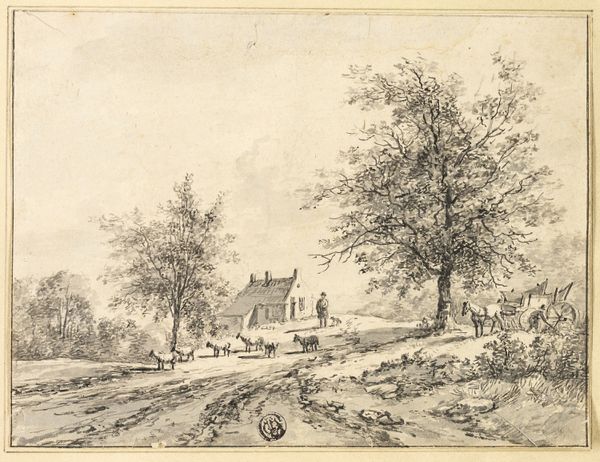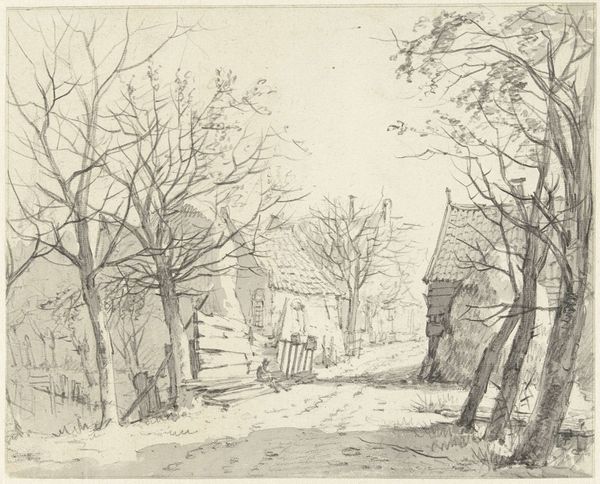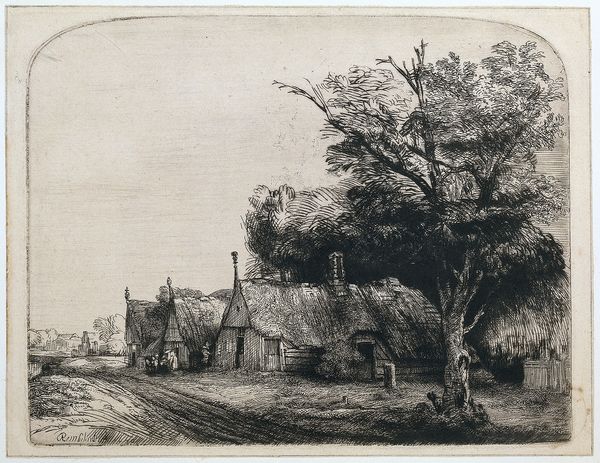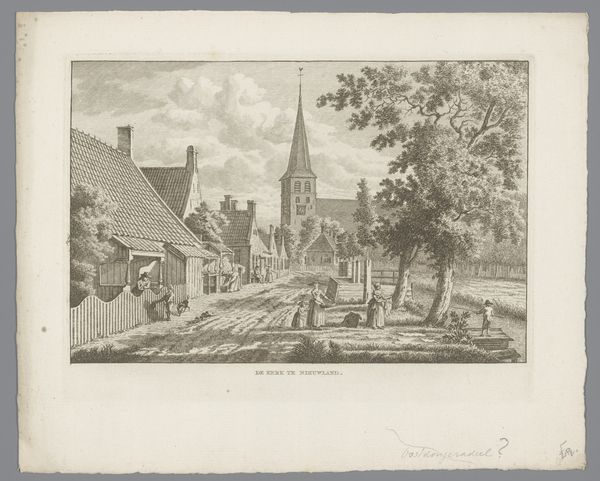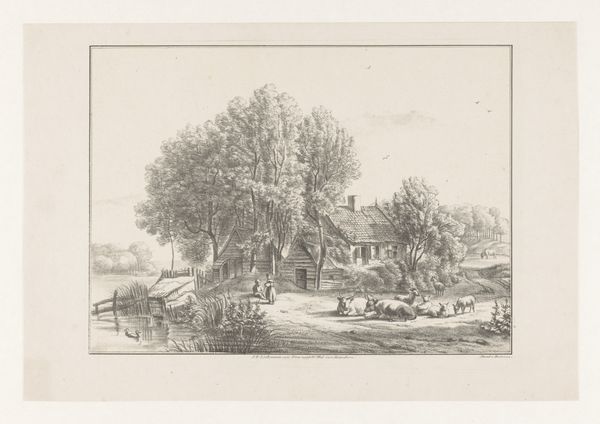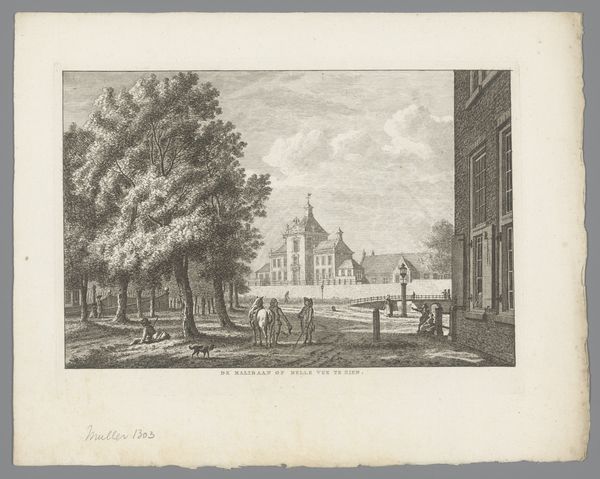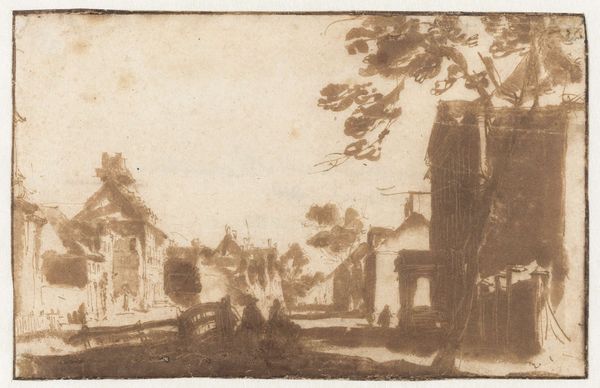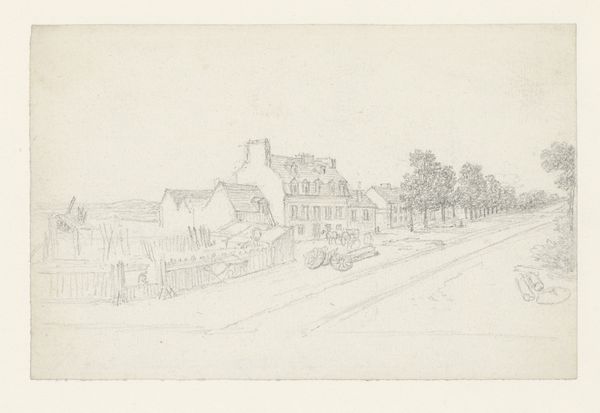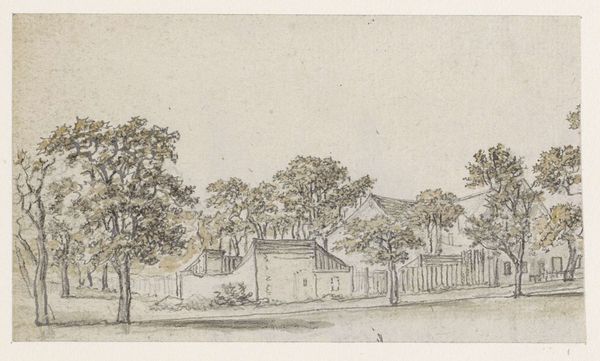
drawing, pencil
#
drawing
#
dutch-golden-age
#
landscape
#
pencil
#
realism
Dimensions: height 185 mm, width 287 mm
Copyright: Rijks Museum: Open Domain
Jacob van Ruisdael made this drawing of a village road with pen and brown ink, capturing a slice of 17th-century Dutch life. Ruisdael was a key figure in the Dutch Golden Age, when landscape painting emerged as a distinct and celebrated genre. This image encapsulates the values of the rising merchant class in the Netherlands. Unlike the aristocratic art of other European nations, Dutch art focused on everyday scenes, reflecting a society that valued hard work and a close connection to the land. Ruisdael’s detailed rendering of the buildings and lush foliage speaks to a sense of pride in the Dutch countryside and a burgeoning national identity. The influence of the Protestant Reformation is visible, with its emphasis on individual experience and observation of the natural world. Historians study maps, household inventories, and other images to build a broader picture of the social conditions that influenced Ruisdael and his contemporaries. Art like this helps us see how the visual culture of the Dutch Golden Age promoted an image of the nation as industrious, prosperous, and deeply rooted in its local environment.
Comments
No comments
Be the first to comment and join the conversation on the ultimate creative platform.
